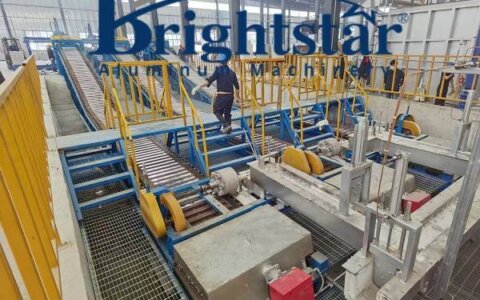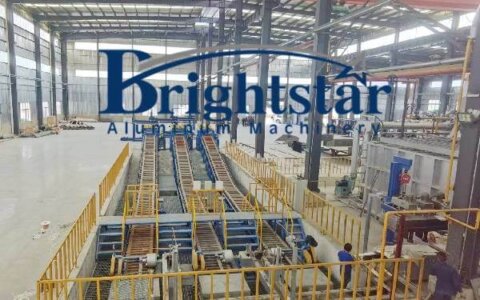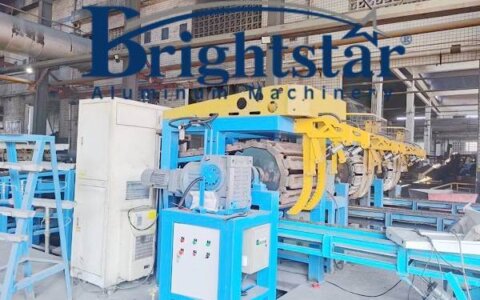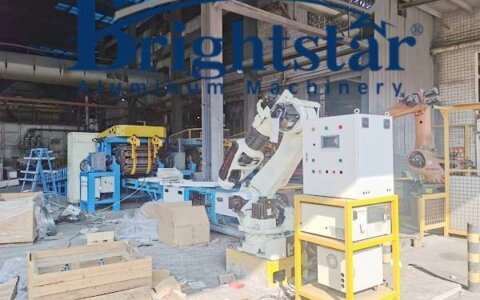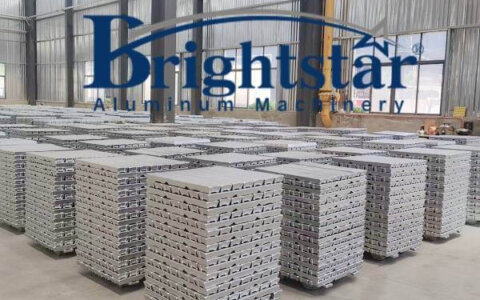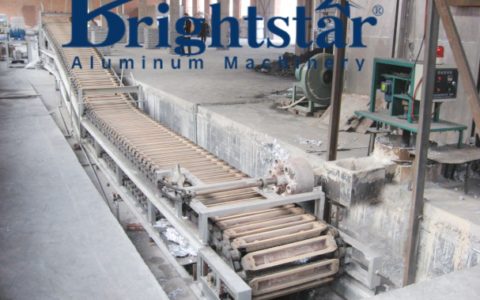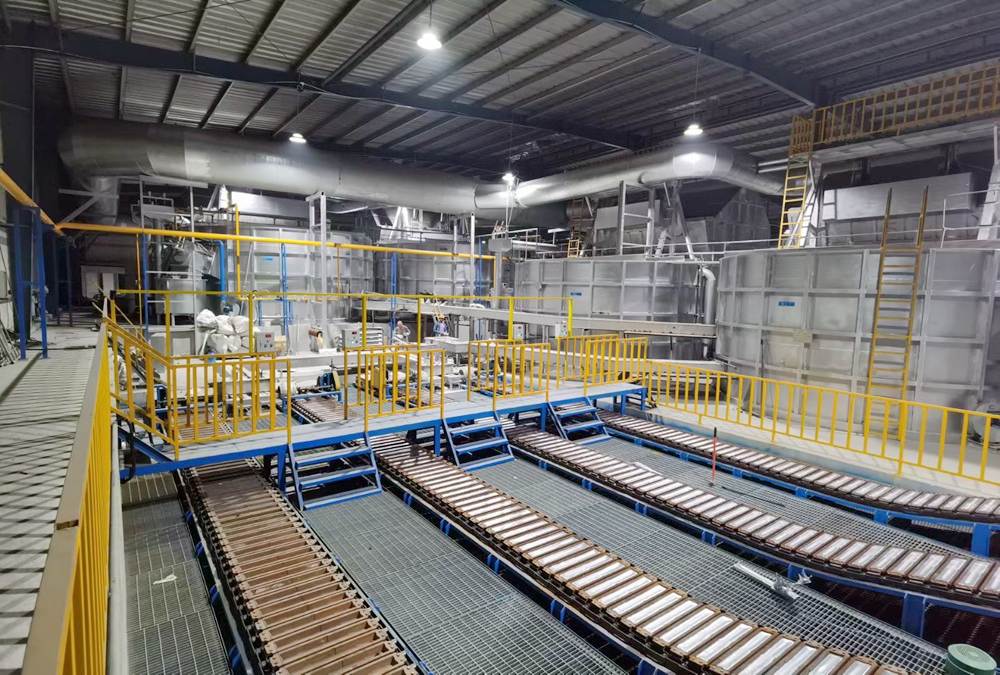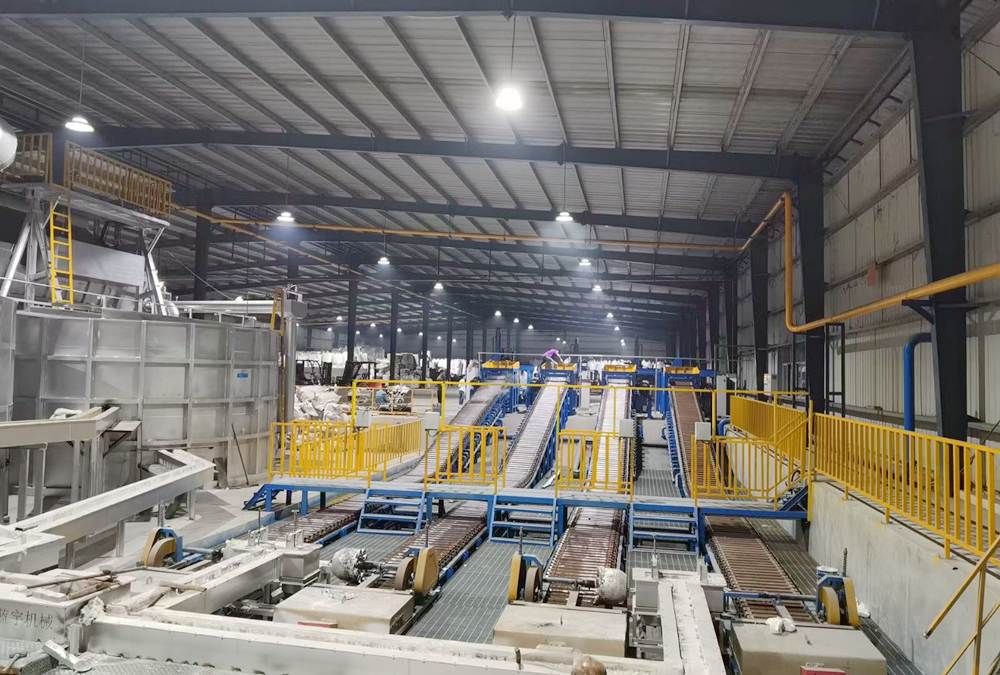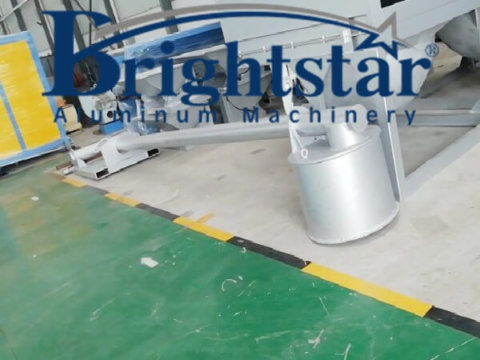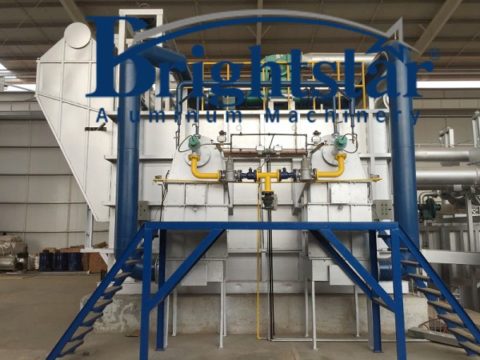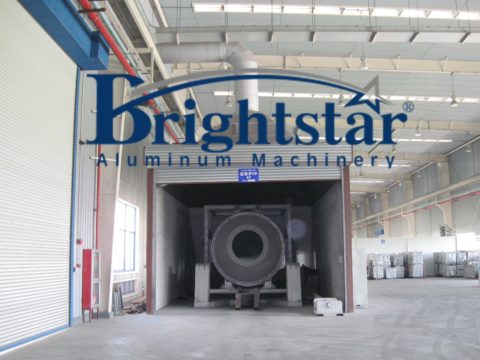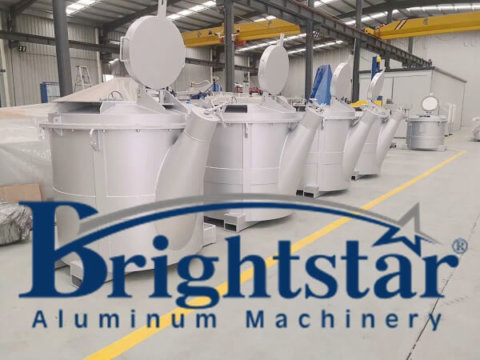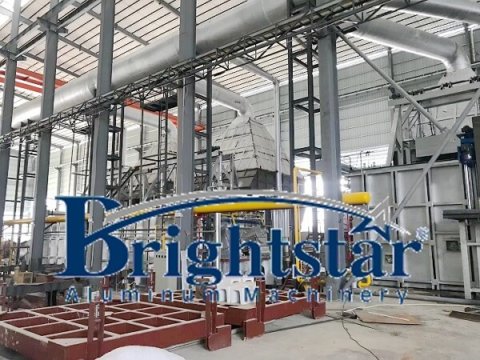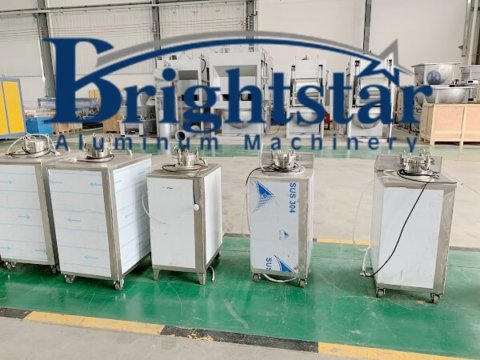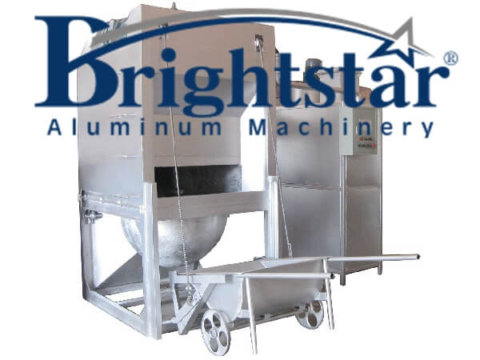
Aluminium ingot casting machine
Aluminium ingot casting machine
Aluminium ingot casting machine
An aluminum ingot casting machine is a specialized piece of equipment used to convert molten aluminum into solid rectangular blocks called ingots.
These ingots serve as the raw material for further processing and manufacturing in various industries like construction, transportation, and consumer goods.
The aluminium alloy ingot casting production line is composed of an ingot casting machine, slag scraper robot, stacker robot, stacking conveyor line, automatic labeling machine (or laser marking machine), automatic weighing system and other production parts.
The aluminum alloy ingot casting production line can realize functions such as automatic casting of molten aluminum, slag scraper treatment on the surface of molten aluminum, automatic stacking by robots, automatic weighing, automatic transmission of weighing data, automatic printing of labels and automatic labeling (or automatic laser marking), etc.
The aluminum alloy ingot casting production line can not only realize the operation with fewer people, reduce labor costs, reduce personnel burns and other safety problems during the production process, but also improve production efficiency and enhance the corporate image.
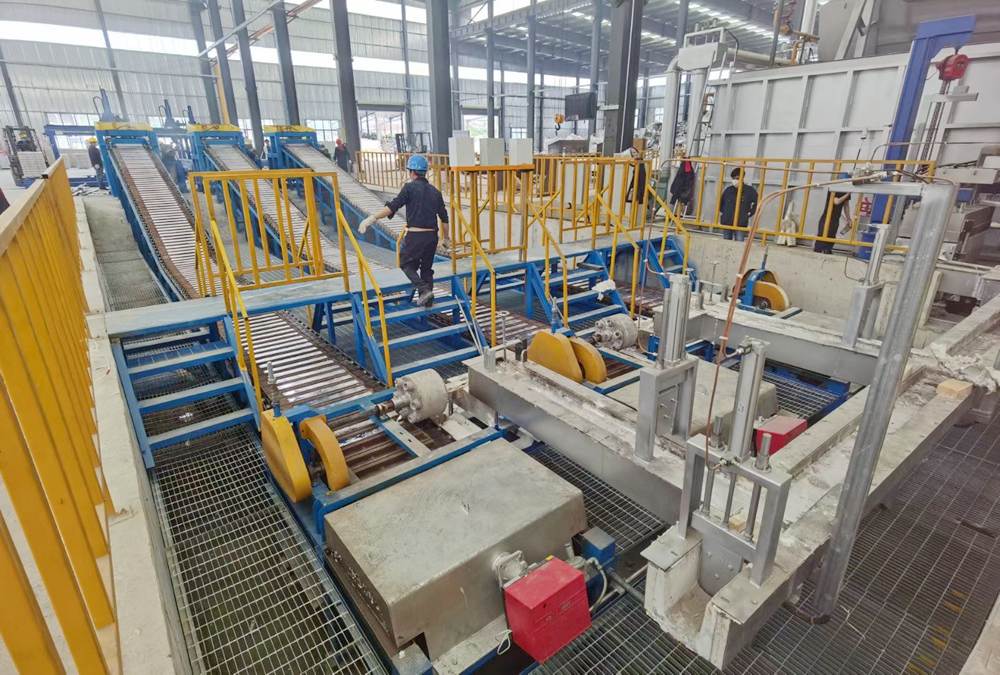
Function:
The primary function of an aluminum ingot casting machine is to:
Pour molten aluminum: The machine receives molten aluminum from a furnace or holding vessel and directs it into pre-prepared molds.
Solidify the metal: The molds are designed to cool the aluminum efficiently, transforming it from a liquid to a solid state.
Eject the cooled ingots: Once solidified, the machine automatically removes the ingots from the molds for further handling or storage.
Key Features:
Mold system: The machine comprises a series of individual molds arranged in a row or carousel. Each mold is designed to accommodate a specific ingot size and shape.
Cooling system: An efficient cooling system, often using water or other fluids, surrounds the molds to accelerate the solidification process.
Pouring mechanism: Molten aluminum is precisely poured into the molds through controlled channels or ladles.
Ejection mechanism: Upon solidification, the molds open or tilt automatically to eject the formed ingots.
Control system: The entire process is monitored and controlled by a computerized system for safety, accuracy, and efficiency.
Advantages:
High production rate: Casting machines can produce a large number of ingots per hour, increasing overall production capacity.
Consistent quality: Automated processes and controlled cooling ensure consistent ingot size, shape, and internal structure.
Reduced labor costs: Automated operation minimizes the need for manual labor compared to traditional sand casting methods.
Improved safety: Enclosed machinery and automated handling reduce the risk of accidents and injuries associated with molten metal handling.
Enhanced resource utilization: Efficient cooling helps minimize molten metal loss during solidification, maximizing resource utilization.
Applications:
Aluminum smelters: Ingots are a primary product of aluminum smelters, serving as the feedstock for further processing in rolling mills and extrusion plants.
Foundries: Aluminum ingots are used as raw material for casting various industrial parts and components.
Secondary aluminum production: Recycled aluminum is often cast into ingots for reintroduction into the manufacturing cycle.
Overall, aluminum ingot casting machines play a crucial role in the aluminum industry by efficiently converting molten metal into standardized ingots.
Their high production rate, consistent quality, and operational efficiency make them essential equipment for smelters, foundries, and any facility reliant on aluminum as a core material.
Main Application
BS aluminium ingot casting machine is used for the casting molding of metallurgical ingots in the last step, which is applied for the casting of aluminum ingots, zinc ingots, lead ingots, and iron ingots.
It is of high efficiency with a maximum capacity of 12 tons ingots per hour.
The drive motor is an AC speed-adjusting motor and the method selected is electromagnetic speed adjustment and step-less speed regulation.
Capacity has been largely increased by this machine because of its automatic filling, uniform billet and low labor intensity.
The equipment is the linear type with a maximum width of 1.3 meters and a length of 12-30 meters.
Equipment details description
1. The ingot mold is the 200 # containing manganese cast iron.
After heat treatment and shot blasting processing, the ingot mold is made by weight ratio, and the finished product weight will meet the requirements of manufacturers with a smooth cavity, clear pattern, heat resistance, wear resistance and corrosion resistance, and service time more than 15 thousand times, which can meet the requirements of various grades of ingot casting;
2. The sprocket is processed by the 400 # ductile iron, and the chainplate is processed by quenching and tempering treatment with the 45 # steel;
3. The main drive reducer, double-row plate chain transmission device, tail wheel stressing device, tape-controlled roller and mold are synchronized with the distribution.
The filling of liquid is automatic; the weight of the spindle is uniform.
There is no ripple on the surface and the quantitative pouring has successfully avoided overflow flash;
4. The forced water cooling device for automatic water cooling or water spraying cooling has shortened the condensation time and after condensation, it will be put out by reversing the mold;
5. It is convenient to install and exchange and easy to maintain and clean.
It is equipped with an automatic ingot stripper hammer;
6. The power is with stepless variable frequency control and electrical control box speed adjustment, which enjoys accurate position and smooth operation.
Technical Parameters of aluminium ingot casting machine
| Model | BS-10 | BS-15 | BS-20 | BS-25 | BS-30 |
|
Total length(M) |
10 | 15 | 20 | 25 | 30 |
| Operative speed (m/min) | 0~8
adjustable |
0~8 adjustable | 0~8
adjustable |
0~8
adjustable |
0~8
adjustable |
|
Quantity of mold |
66 | 96 | 126 | 156 | 186 |
| (T/h)Capacity | 6~10 | 6~10 | 6~10 | 6~10 | 6~10 |
| (T/h)
Weight of cast ingot |
8~20 | 8~20 | 8~20 | 8~20 | 8~20 |
| (kW)
Power |
7.5 | 11 | 15 | 18.5 | 22 |
The Necessity of Aluminum Ingot Casting Machines in Aluminum Alloy Ingot Production
While not inherently the only method available, aluminum ingot casting machines are highly necessary for efficient and large-scale production of aluminum alloy ingots.
Here’s why:
Increased Efficiency and Productivity:
High production rate: Compared to traditional methods like sand casting, machines can produce significantly more ingots per hour, boosting overall production capacity.
Faster solidification: Controlled cooling systems within the machine accelerate the solidification process, enabling quicker turnaround times and higher output.
Reduced labor requirements: Automated pouring, cooling, and ejection mechanisms minimize the need for manual labor, improving operational efficiency and cost-effectiveness.
Enhanced Quality and Consistency:
Precise shaping and sizing: Molds are designed to create ingots with exact dimensions and consistent shapes, improving downstream processing and minimizing rejections.
Controlled cooling: Uniform cooling conditions within the machine lead to consistent internal structure and properties across all ingots, enhancing quality and reliability.
Reduced impurities and losses: Efficient casting and solidification processes minimize the risk of contamination and metal loss, resulting in purer and more valuable ingots.
Improved Safety and Sustainability:
Enclosed operation: Machines contain the molten metal and casting process, reducing the risk of accidents and worker exposure to heat and hazards.
Optimized resource utilization: Efficient cooling and controlled operations minimize energy consumption and metal loss, contributing to sustainable production practices.
Waste reduction: Automated and controlled processes decrease the generation of waste materials like casting sand, leading to a cleaner and more environmentally friendly operation.
Overall, for larger-scale and quality-focused aluminum alloy ingot production, aluminum ingot casting machines are undeniably necessary investments.
Their efficiency, consistent quality, and safety advantages significantly contribute to improved production capacity, resource utilization, and overall business profitability.
Contact us now for a reliable No-obligation project quotation and we will offer a total solution for your project!
